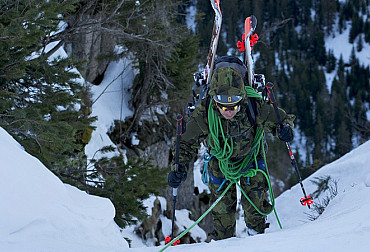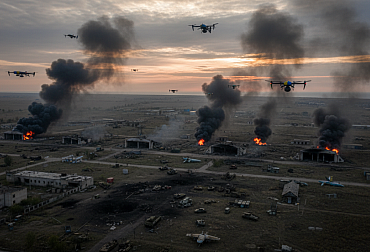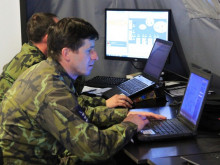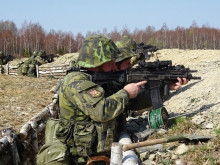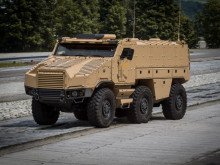How to proceed with the supersonic air force of the Czech Air Force
In connection with the current events in Ukraine and the overall deterioration of the security situation in Europe, the question of what path the Czech Air Force should take has recently been raised. In the light of the recent events, the Czech Air Force appears to be too weak and undersized. Of course, this has been known for years, but only now has this long-overlooked problem emerged in full view and is finally being addressed, or at least discussed more seriously.
Most of the discussion is, of course, around the issue of supersonic aviation, a key element of our defence. After all, it is today that the need for supersonic aircraft is being clearly demonstrated - to some extent as a mockery of those who doubted the usefulness of the Czech supersonic air force or even proposed its abolition.
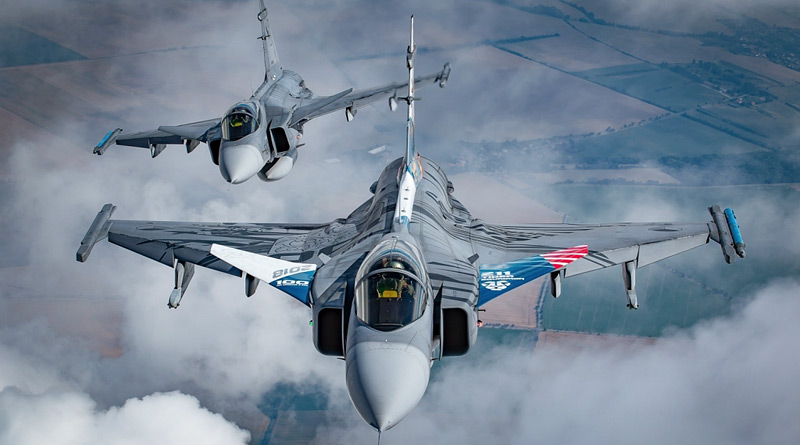
Picture: It is in the light of recent events that the Czech supersonic air force appears too weak and undersized. Of course, this has been known for years, but it is only now that the problem has come to the surface. (illustration photo) | Ministry of Defence of the Czech Republic
Currently, the Czech Army has fourteen JAS-39 Gripen aircraft, twelve of which are in the single-seat version (JAS-39C) and two two-seat JAS-39Ds. The current lease contract for these fighters expires in 2027, just 5 years from now. Considering how long decisions on the acquisition of such an important (and also expensive) combat system as supersonic fighters have been dragging on, it is clear that this is the perfect time for this discussion.
What type of supersonic aircraft for the Czech Air Force's tactical air force?
The first and probably the easiest option is to continue with the JAS-39 Gripen. However, the situation is not as simple as it might seem. First of all, it can be stated that the Gripen aircraft have proved their worth to the Czech Republic. Gripen aircraft offer a rather unique combination of high performance and high-end software combined with low weight. As a result, Gripen aircraft have a lower price and, above all, low operating costs, which is an advantage that should not be overlooked.
One problem is that the existing Gripen aircraft have been in service since 2004. They have therefore had almost 20 years of intensive service, which was once considered a suitable time to retire the aircraft. In recent years, however, it has become apparent that, thanks to the use of modern materials and technology, supersonic aircraft can last much longer. In some cases, aircraft can last for thirty or forty years, and sometimes even longer. This is why individual air forces have been upgrading their aircraft repeatedly, and many air forces are also acquiring vintage aircraft (e.g. Romania's purchase of the F-16). The Czech Republic could theoretically follow a similar path. Thus, a certain option is to continue with the lease of the existing Gripen aircraft, where a third lease contract could be concluded (the question is, however, for how long).
Another option is to buy back the existing Gripen aircraft, with them already being fully owned and operated by the Czech Army. The advantage is that the price of these already flown aircraft would be relatively low. Moreover, we would already decide on their fate ourselves. However, it would be necessary to take into account that the requirements for the technical support of these aircraft, which has been provided by Saab, would increase.
A certain disadvantage of both of the above mentioned options is the fact that the existing JAS-39 Gripen aircraft serving in the Czech Armed Forces would have to undergo modernisation in the near future, which will of course entail certain costs. If the existing aircraft were to be upgraded to the C+ standard, they would be approximately on a par with the newer Generation 4+ aircraft, for example, the F-16C/D Block 70, in terms of equipment.
Another very attractive option would be the acquisition of a new version of the JAS-39, the Generation 4+ JAS-39E/F, which has many of the features of the Generation 5 aircraft. This would allow the Czech supersonic air force to increase its capabilities while maintaining its current numbers. Moreover, deliveries of these aircraft could easily follow the termination of the current JAS-39 C/D lease contract.
However, it would be wrong to focus only on Gripen aircraft, as there are other options. Probably the most serious and most frequently mentioned option is the acquisition of US F-35s. The F-35 represents the 5th generation aircraft with all its advantages. The aircraft offers advanced software, and above all, excellent situational awareness, which is a key advantage of the F-35.
Importantly, after overcoming some initial difficulties, the F-35 is proving to be a very reliable and proven type. Hundreds of these advanced aircraft are already flying around the world with various air forces and the number of interested parties is increasing, which also speaks for the quality of this type. It is also important that European countries such as Poland, Switzerland, Greece, Finland and now also Germany are acquiring them. And there are probably more countries to come, which as a result offers easier availability of spare parts, the possibility of coordination between operators, etc.
The great advantage of the F-35 is that its production is already fully established and is taking place in large batches, and the manufacturer is even considering increasing it. However, it should be taken into account that the eventual production of F-35 aircraft for the Czech Air Force would take some time, including pilot training. Moreover, it should be taken into account that Czech pilots would have to undergo more extensive training with the transition to a completely different type of aircraft. Moreover, by acquiring the F-35, we would strengthen our Euro-Atlantic link, which, in the context of today's war in Ukraine, seems to be of considerable value.
The F-35 has its drawbacks, including its higher cost. As the recent Finnish tender shows, the F-35 is probably not that much more expensive than the JAS-39 E/F Gripen, but it is still a considerable sum. Perhaps an even bigger disadvantage of acquiring the F-35 is the higher operating costs - especially compared to the smaller Gripen - which could make the operation of these new machines very complicated in the future.
However, there are other options to strengthen the Czech supersonic air force, although these aircraft are only available in the more distant future. One of these options is the new European NGFA aircraft, the development of which is currently being carried out in cooperation between Germany and France, and Spain. It is expected to be a very powerful aircraft that would significantly increase the capabilities of the Czech Air Force, even while maintaining current numbers. However, it must be taken into account that the NGFA aircraft will be expensive, and due to its performance and size it will be an operationally demanding aircraft. It should also be taken into account that the NGFA is still under development (but may be accelerated given the current situation). Thus, NGFA aircraft will not enter service until sometime after 2030; in addition, it can be assumed that the first deliveries will be to France and Germany. The Czech Republic could therefore not acquire NGFA aircraft until sometime after 2035 or even later.
Virtually the same can be said of another European design, the Tempest, which is primarily being developed by the UK but which has significantly strengthened its European dimension following Italy's involvement in the programme. The Tempest is roughly comparable to the NGFA, where it is again a very powerful but also expensive and operationally demanding aircraft. Moreover, deliveries of these aircraft could not be made until sometime after 2035.
Thus, the NGFA and Tempest cannot address the current situation of the Czech Air Force, or the aircraft the Czech Republic should have at its disposal after 2027. After all, as already mentioned, the Czech Gripen aircraft have a sufficient service life and can serve beyond the expiry of the current contract valid until 2027. Their service life can be extended until at least 2035. Therefore, should the Czech Republic decide to extend the contract or buy back the JAS-39 Gripen aircraft, it could follow up the end of their service by acquiring NGFA or Tempest aircraft. Moreover, given its traditional aerospace industry, the Czech Republic could join one of these programmes, which would bring economic and technological benefits.
A somewhat similar option is the acquisition of the South Korean KF-21 Boramae aircraft. Again, this is a modern, state-of-the-art design, equipped with Western technology. Although the development of the KF-21 Boramae is not yet complete, it is nevertheless at a significantly more advanced stage than the NGFA and Tempest. At first glance, the South Korean aircraft might seem too distant, exotic a design. However, the opposite is true. The KF-21 Boramae is technically a typical Western aircraft, incorporating Western technology. Given its attractiveness, the KF-21 Boramae is likely to be acquired by some European countries. Possible cooperation with South Korea and the advanced South Korean industry could significantly strengthen the Czech Republic.
However, it should again be noted that all three of the above-mentioned aircraft - NGFA, Tempest, KF-21 Boramae - will be available only in the distant future, well beyond 2027, and thus cannot address the current situation of the ACR.
How many aircraft for the Czech Air Force?
In today's situation it is clearly shown how insufficient the numbers of the Czech supersonic air force (12+2 aircraft) are and that they need to be strengthened. It can be recalled here that more supersonic aircraft were originally to be acquired, 24-36 aircraft were considered for acquisition. Unfortunately, these plans did not materialise. Certainly, the original plans could not be kept due to the disastrous floods of 2002. Nevertheless, Czech governments have had plenty of time (20 years) since then to increase the number of supersonic aircraft.
One option is to acquire one additional swarm, i.e. 4 aircraft. It may be noted here that this solution was considered by the Ministry of Defence of the Czech Republic at one time, but unfortunately it was not implemented. Just four extra aircraft might seem like a ridiculous number, yet even this increase would be a boost for the Czech supersonic air force. The Air Force would thus have a much needed reserve and would not be constantly moving at the limit of its capabilities. It would be able to spread its operations over more aircraft, thus extending their service life, and last but not least, this increase would allow it to train a greater number of military pilots.
A much better solution, however, is to acquire a whole additional fighter squadron, i.e. de facto doubling the current number. The Czech Armed Forces would have a total of 28 aircraft, or 24+4 aircraft. Even though the Czech supersonic air force would still be one of the smaller ones compared to other armies, this increase seems sufficient.
It is of course possible to imagine an even higher increase in numbers; there are many hypothetical scenarios. We can also recall that the Air Force of the former Czechoslovakia had 345 aircraft at the beginning of the 1990s, and this was already a situation where a reduction in numbers had already taken place. However, we should approach the increase as realistically as possible. It must be taken into account that the Czech budget is limited. Although the current government is promising an increase in defence spending, not much is actually happening. Thus, the Czech supersonic air force cannot yet count on any significant increase in funding that would allow the acquisition of more combat aircraft. It is also necessary to take into account that with the acquisition of more aircraft, operating costs will also rise. Therefore, the Czech Army should only acquire as many aircraft as it can realistically operate. In further development of the military aviation capabilities, the Czech Air Force, or the Ministry of Defence of the Czech Republic, should proceed with maximum emphasis on economics.











